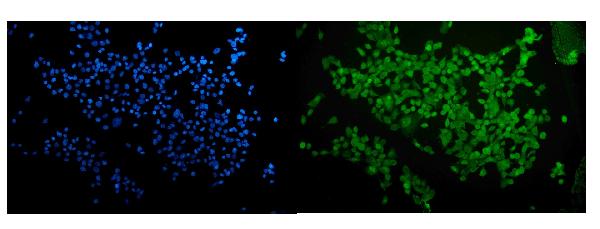
Figure 1. Western blot analysis of RUNX2 using anti-RUNX2 antibody (PB9158). Electrophoresis was performed on a 5-20% SDS-PAGE gel at 70V (Stacking gel) / 90V (Resolving gel) for 2-3 hours. Lane 1: recombinant human RUNX2 protein 0.5 ng. After electrophoresis, proteins were transferred to a nitrocellulose membrane at 150 mA for 50-90 minutes. Blocked the membrane with 5% non-fat milk/TBS for 1.5 hour at RT. The membrane was incubated with rabbit anti-RUNX2 antigen affinity purified polyclonal antibody (Catalog # PB9158) at 0.5 microg/mL overnight at 4°C, then washed with TBS-0.1%Tween 3 times with 5 minutes each and probed with a goat anti-rabbit IgG-HRP secondary antibody at a dilution of 1:5000 for 1.5 hour at RT. The signal is developed using an Enhanced Chemiluminescent detection (ECL) kit (Catalog # EK1002) with Tanon 5200 system. A specific band was detected for RUNX2 at approximately 50 kDa. The expected band size for RUNX2 is at 50 kDa.
Anti-RUNX2 Antibody Picoband(r)

PB9158
ApplicationsImmunoFluorescence, Western Blot, ImmunoCytoChemistry
Product group Antibodies
ReactivityHamster, Human
TargetRUNX2
Overview
- SupplierBoster Bio
- Product NameAnti-RUNX2 Picoband Antibody
- Delivery Days Customer9
- Antibody SpecificityNo cross reactivity with other proteins.
- Application Supplier NoteWB: The detection limit for RUNX2 is approximately 0.25ng/lane under reducing conditions. Tested Species: In-house tested species with positive results. Other applications have not been tested. Optimal dilutions should be determined by end users.
- ApplicationsImmunoFluorescence, Western Blot, ImmunoCytoChemistry
- Applications SupplierWB
- CertificationResearch Use Only
- ClonalityPolyclonal
- Concentration500 ug/ml
- FormulationLyophilized
- Gene ID860
- Target nameRUNX2
- Target descriptionRUNX family transcription factor 2
- Target synonymsacute myeloid leukemia 3 protein; AML3; CBFA1; CBF-alpha-1; CCD; CCD1; CLCD; core-binding factor, runt domain, alpha subunit 1; oncogene AML-3; OSF2; OSF-2; osteoblast-specific transcription factor 2; PEA2aA; PEA2-alpha A; PEBP2aA; PEBP2-alpha A; polyomavirus enhancer-binding protein 2 alpha A subunit; runt related transcription factor 2; runt-related transcription factor 2; SL3/AKV core-binding factor alpha A subunit; SL3-3 enhancer factor 1 alpha A subunit
- HostRabbit
- IsotypeIgG
- Protein IDQ13950
- Protein NameRunt-related transcription factor 2
- Scientific DescriptionBoster Bio Anti-RUNX2 Antibody Picoband® catalog # PB9158. Tested in IF, ICC, WB applications. This antibody reacts with Human. The brand Picoband indicates this is a premium antibody that guarantees superior quality, high affinity, and strong signals with minimal background in Western blot applications. Only our best-performing antibodies are designated as Picoband, ensuring unmatched performance.
- ReactivityHamster, Human
- Reactivity SupplierHuman, Hamster
- Storage Instruction-20°C,2°C to 8°C
- UNSPSC12352203
References
- Icariin protects vertebral endplate chondrocytes against apoptosis and degeneration via activating Nrf-2/HO-1 pathway. Shao Y et al., 2022, Front PharmacolRead more
- Glucocorticoids decreased Cx43 expression in osteonecrosis of femoral head: The effect on proliferation and osteogenic differentiation of rat BMSCs. Zhao X et al., 2021 Jan, J Cell Mol MedRead more
- Bone regeneration and mineralisation was promoted during distraction osteogenesis by human periostin gene in rabbit mandibular model. Jiang X et al., 2020 Nov, J Stomatol Oral Maxillofac SurgRead more
- A sericin/ graphene oxide composite scaffold as a biomimetic extracellular matrix for structural and functional repair of calvarial bone. Qi C et al., 2020, TheranosticsRead more
- Lithium chloride promotes the odontoblast differentiation of hair follicle neural crest cells by activating Wnt/beta-catenin signaling. Shan T et al., 2015 Jan, Cell Biol IntRead more


